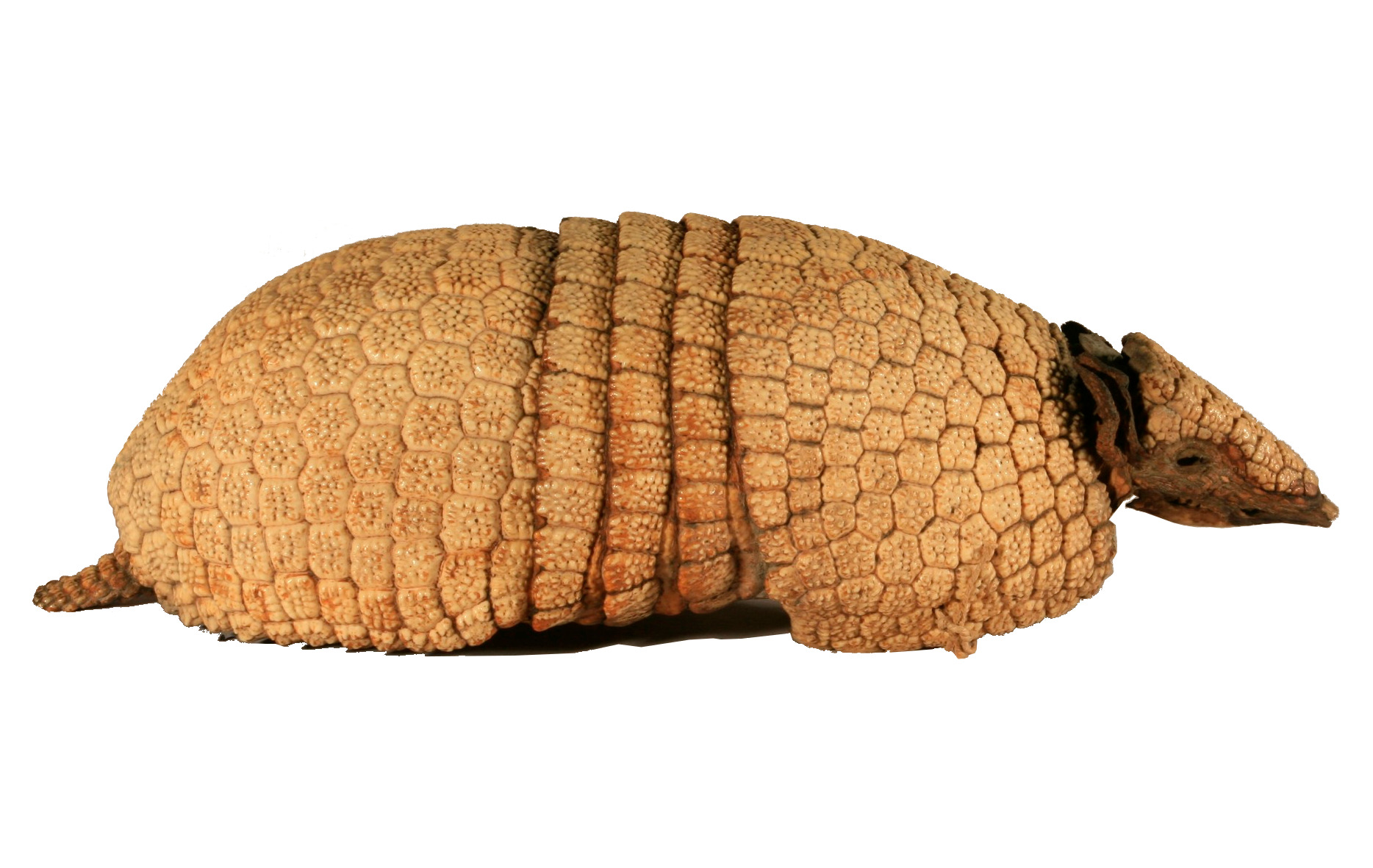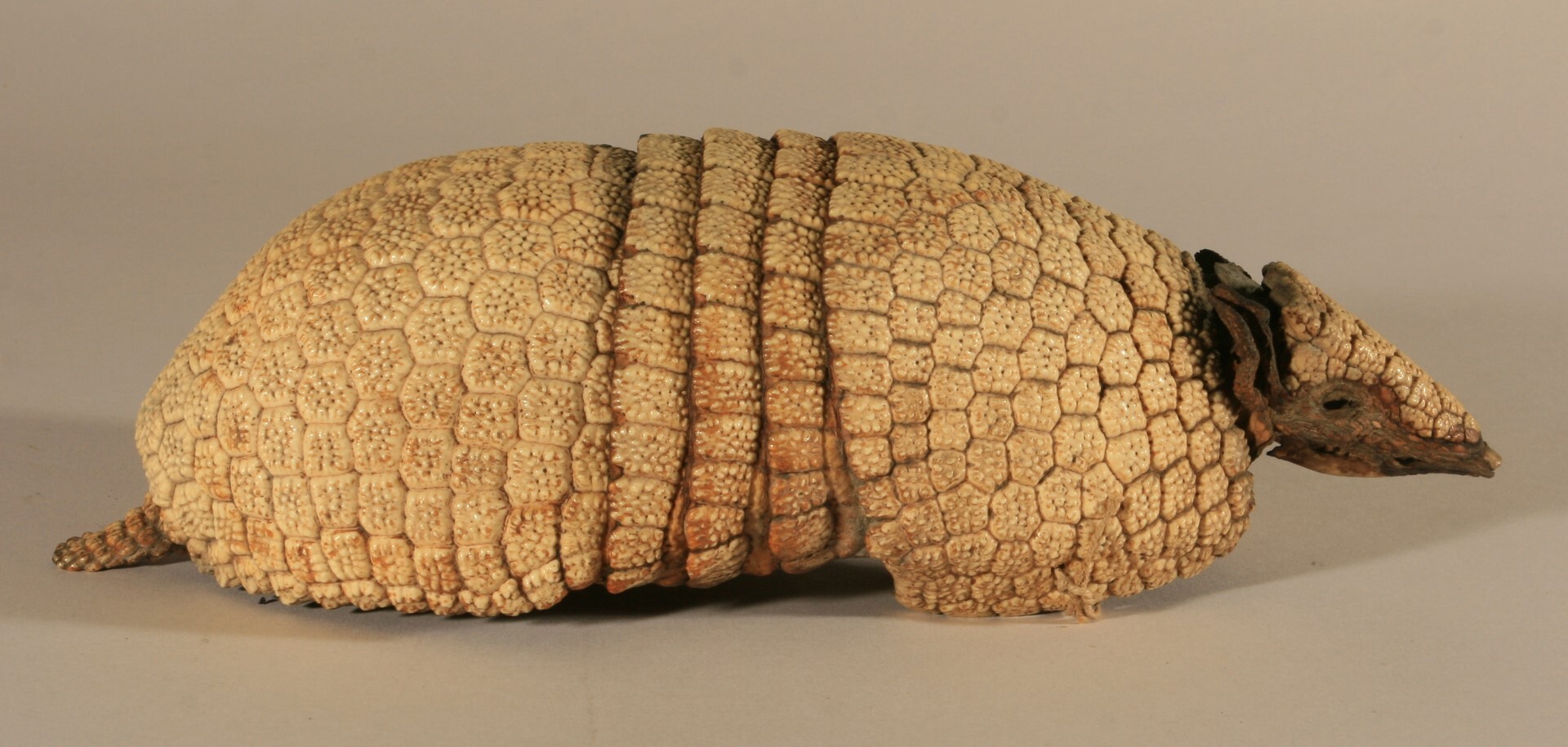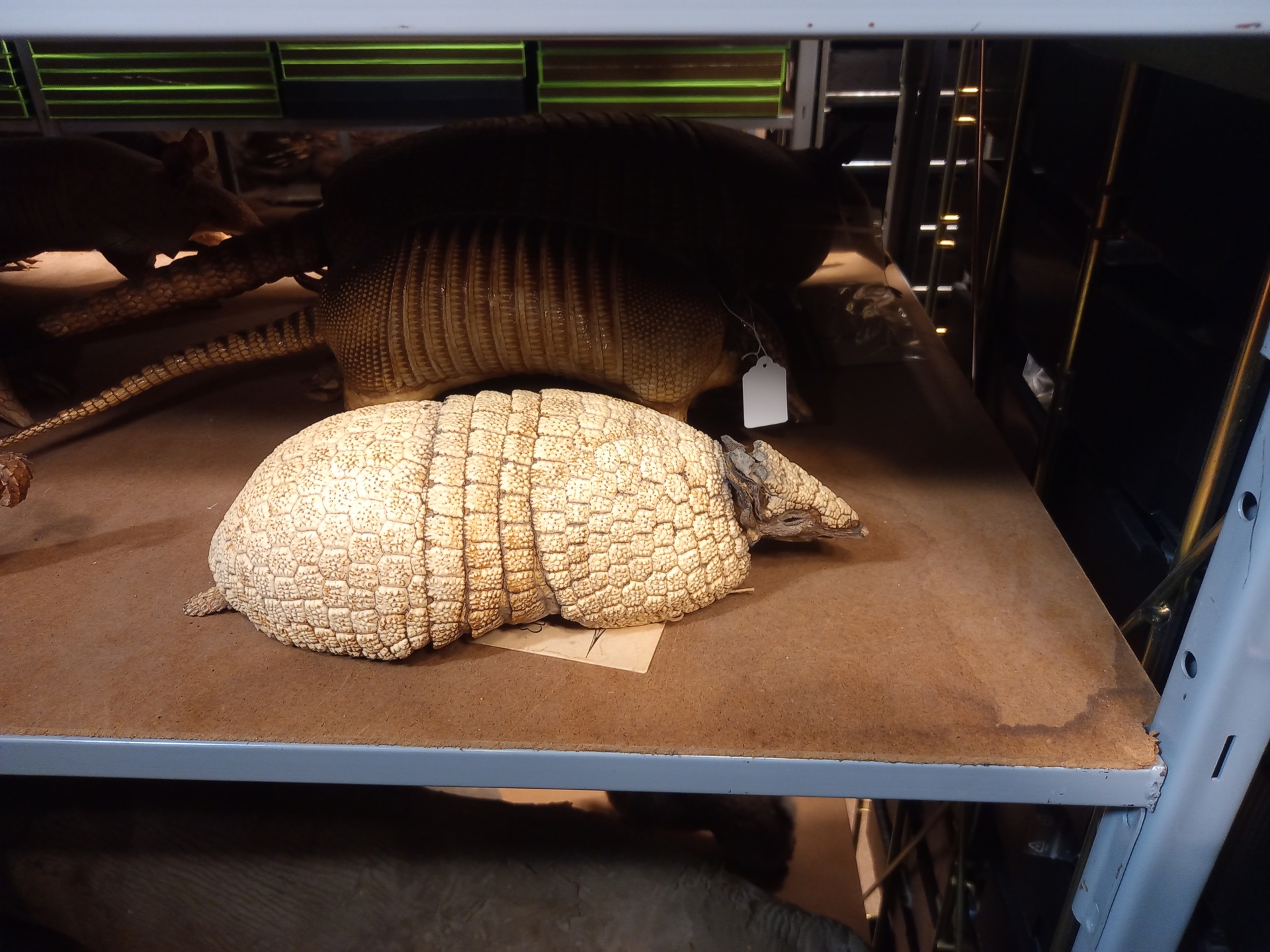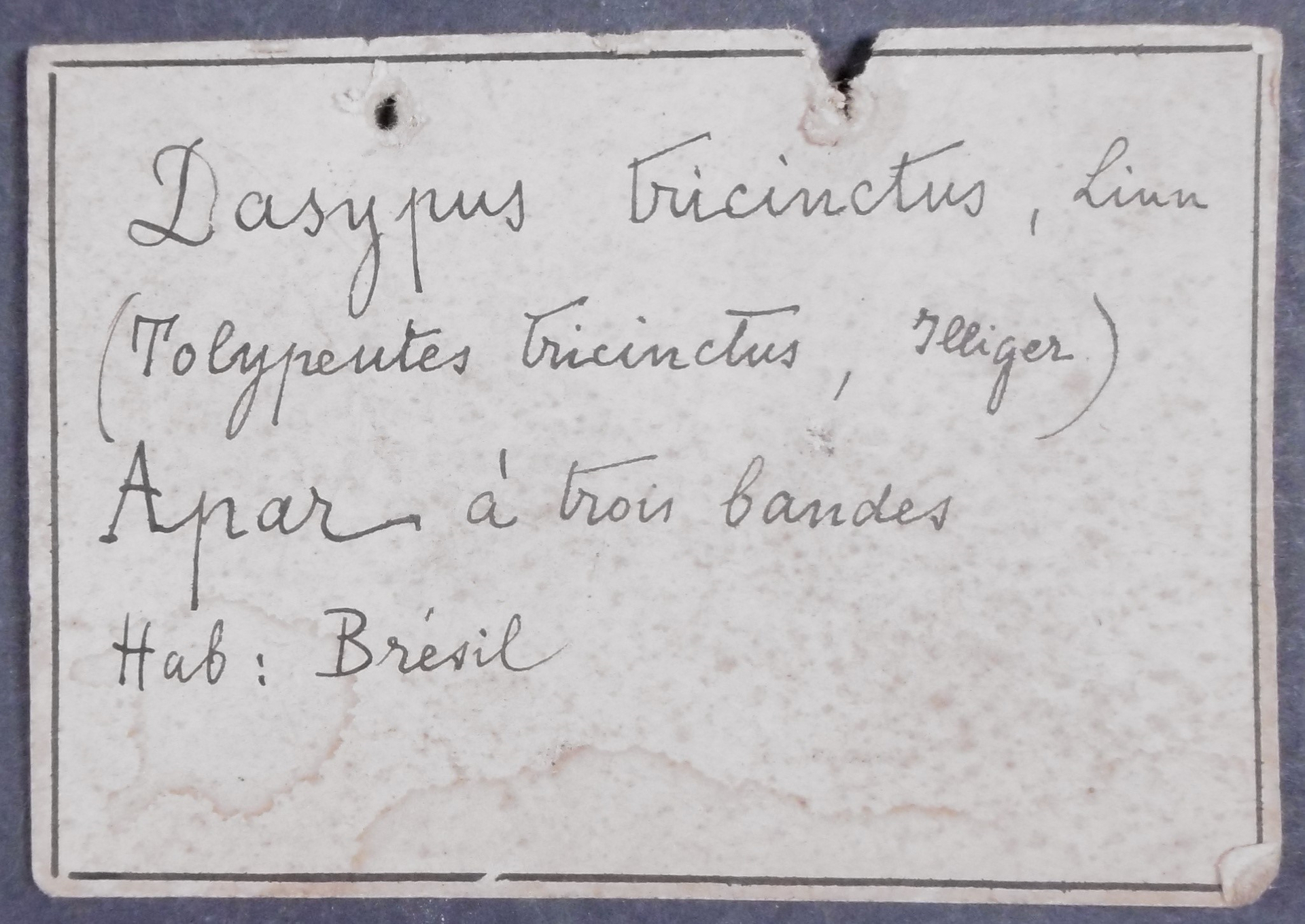Three-banded armadillo (TOLYPEUTES MATACUS), Musée Vert – Musées du Mans
Beschreibung
This dried specimen of TOLYPEUTES MATACUS, or three-banded armadillo, is kept in the storage facilities of the Musée in Le Mans. Native to central South America, the International Union for Conservation of Nature has listed it as a threatened species. Our specimen comes first from Brazil and second from the natural science cabinet of Louis Maulny (1758-1815), a naturalist from Le Mans (France) who may have bought it from a natural history dealer or exchanged it with another naturalist. It entered the public collection of Le Mans Museum in 1816, when Maulny’s cabinet was acquired by the department of Sarthe.
The label accompanying the specimen displays the taxonomic debates of the early 19th century: when the armadillo entered the museum’s collection, the curator hesitated over the system and the name he should choose, including the French vernacular name ('Apar à trois bandes') and two binomial scientific names in Latin, 'DASYPUS TRICINCTUS, LINN' and 'TOLYPEUTES TRICINCTUS (Illiger)'. Namely, two different systems/nomenclatures for classifying mammals were in use: that of Carl von Linné (1707-1778), the 18th-century Swedish naturalist famous for his Systema naturae, and the methods proposed by Johann Karl Wilhelm Illiger (1775-1813), curator of the Berlin Zoological Museum.
References:
- Nathalie Richard, Irina Podgorny & Nicolas Morel (2022): “Les voyages du tatou dans les sciences et par les mers", The Conversation, April 7, 2022, <https://theconversation.com/les-voyages-du-tatou-dans-les-sciences-et-par-les-mers-180603>.
The label accompanying the specimen displays the taxonomic debates of the early 19th century: when the armadillo entered the museum’s collection, the curator hesitated over the system and the name he should choose, including the French vernacular name ('Apar à trois bandes') and two binomial scientific names in Latin, 'DASYPUS TRICINCTUS, LINN' and 'TOLYPEUTES TRICINCTUS (Illiger)'. Namely, two different systems/nomenclatures for classifying mammals were in use: that of Carl von Linné (1707-1778), the 18th-century Swedish naturalist famous for his Systema naturae, and the methods proposed by Johann Karl Wilhelm Illiger (1775-1813), curator of the Berlin Zoological Museum.
References:
- Nathalie Richard, Irina Podgorny & Nicolas Morel (2022): “Les voyages du tatou dans les sciences et par les mers", The Conversation, April 7, 2022, <https://theconversation.com/les-voyages-du-tatou-dans-les-sciences-et-par-les-mers-180603>.
Kurzbeschreibung
This dried specimen of TOLYPEUTES MATACUS, or three-banded armadillo, is kept in the storage facilities of the Musée in Le Mans. Native to central South America, the International Union for Conservation of Nature has listed it as a threatened species. Our specimen comes first from Brazil and second from the natural science cabinet of Louis Maulny (1758-1815), a naturalist from Le Mans (France) who may have bought it from a natural history dealer or exchanged it with another naturalist. It entered the public collection of Le Mans Museum in 1816, when Maulny’s cabinet was acquired by the department of Sarthe.
Institution
Typ
TOLYPEUTES MATACUS (three-banded armadillo)
Thema
cabinet of curiosities, specimen labeling, history of taxonomy, classification, Le Mans Museum
Beteiligte Personen und Organisationen
18th century: unknown collector; also 18th century: part of collection at Natural Sciences Cabinet of Louis Maulny in Le Mans
In 1816, the specimen enters the Le Mans Museum collections
In 1816, the specimen enters the Le Mans Museum collections
Zeit
Early 18th century
Ort
Brazil
Maße/Umfang
88 x 117 x 297 mm
Material/Technik
Taxidermized amardillo, stone base
Identifikator
Inventory number: MHNLM 2003.28.200
Förderung
Project: SciCoMove - Scientific Collections on the Move: Provincial Museums, Archives and Collecting Practices (1800-1950).
Funding: This project has received funding from the European Union’s Horizon 2020 research and innovation programme under the Marie Skłodowska-Curie grant agreement No 101007579.
The contents of this publication are the sole responsibility of the SciCoMove consortium and do not necessarily reflect the opinion of the European Union.
Funding: This project has received funding from the European Union’s Horizon 2020 research and innovation programme under the Marie Skłodowska-Curie grant agreement No 101007579.
The contents of this publication are the sole responsibility of the SciCoMove consortium and do not necessarily reflect the opinion of the European Union.
Dateien




Quellenangabe
„Three-banded armadillo (TOLYPEUTES MATACUS), Musée Vert – Musées du Mans,” SciCoMove, zuletzt aufgerufen am 20. Juni 2025, https://ausstellungen.deutsche-digitale-bibliothek.de/scicomove/items/show/4.
